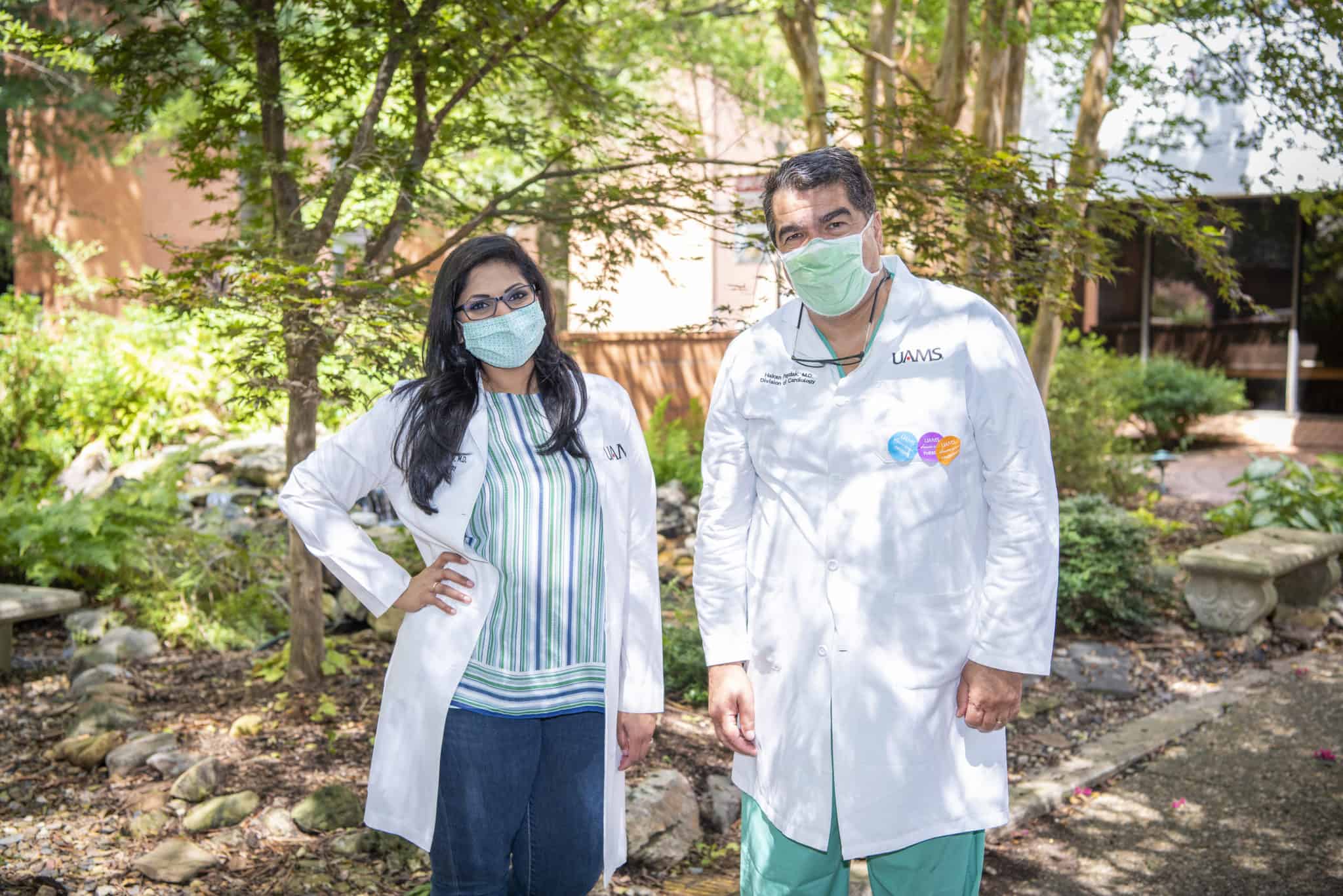Heart Researchers Uncover Simple Tool to Quickly Diagnose Normal vs. Abnormal Rapid Heartbeat
| A team of heart researchers at the University of Arkansas for Medical Sciences (UAMS) has determined a new way to diagnose a dangerous heart rhythm issue using easily understandable graphs.
Their findings were published as a case study in JAMA Internal Medicine, and they are working on follow-up research to further explore their findings.
The researchers are Professor Hakan Paydak, M.D., and cardiology fellow Swathi Kovelamudi, M.D., of the Division of Cardiovascular Medicine in the Department of Internal Medicine in the UAMS College of Medicine, along with former faculty member and first author Krishna Pothineni, M.D., now at the University of Pennsylvania.
Their technique is as simple as being able to tell the difference between a bell-shaped curve and a graph with sharp edges like a rectangle or square.
“The ability to produce these graphs is a common capability with just about every form of telemetry heart monitoring,” Paydak said. “This is a technique a lot of health care providers in a lot of contexts will be able to reproduce and easily interpret the results.”
Often when a patient arrives in the doctor’s office or emergency room with an abnormally fast heart rate, which is a type of heart arrhythmia, the exact cause is difficult to determine. The symptoms are the same if the fast heart rate developed gradually during exercise, known as sinus tachycardia, or from a more serious arrhythmia, called supraventricular tachycardia. The first requires no treatment, but the second requires a specific treatment plan.
This was the situation for the patient the researchers wrote about in the case study. The patient was sent to the catheterization laboratory, where the physicians detected a fast heartbeat in the upper chambers of her heart. They suspected the symptoms had developed gradually, but asked Paydak for a consultation. Paydak gave the patient a medication that would treat the supraventricular tachycardia but that wouldn’t change the symptoms if the cause were gradual.
“We were watching the heart monitors and all of a sudden we saw a sharp drop in the heartbeat, in the form of a square or rectangle,” Paydak said. “This helped us diagnose that the patient did indeed have an underlying abnormal rhythm problem that weakened the heart muscle due to rapid rates.”
If she had simply had a rapid form of a normal heartbeat, the graph would have been a gradual curve, like the right side of a bell-shaped curve. The sharp drop-off told Paydak that a more serious condition was to blame. He treated the patient accordingly for three months, and her condition improved. He switched her to a safer medication and now she is doing fine and needs no additional treatments, such as an implantable cardioverter-defibrillator.
“Using this simple and widely available tool can enable clinicians to confidently diagnose cardiac arrhythmias that impact patient care,” Pothineni said.
The team said this is a far easier tool for making this distinction than previous methods available. They are also studying its ease of use by introducing the technique to medical students and seeing if they can use it to correctly make the diagnosis.
“What’s notable about this is that it’s such a simple thing, but it’s so effective and it makes such a dramatic difference in patient management,” Kovelamudi said. “It’s a very simple step, you don’t need a lot of technical expertise to be able to do it, and even our medical students and residents can quickly look at these trends and determine the best course of treatment.”
UAMS is the state’s only health sciences university, with colleges of Medicine, Nursing, Pharmacy, Health Professions and Public Health; a graduate school; a hospital; a main campus in Little Rock; a Northwest Arkansas regional campus in Fayetteville; a statewide network of regional campuses; and eight institutes: the Winthrop P. Rockefeller Cancer Institute, Jackson T. Stephens Spine & Neurosciences Institute, Harvey & Bernice Jones Eye Institute, Psychiatric Research Institute, Donald W. Reynolds Institute on Aging, Translational Research Institute, Institute for Digital Health & Innovation and the Institute for Community Health Innovation. UAMS includes UAMS Health, a statewide health system that encompasses all of UAMS’ clinical enterprise. UAMS is the only adult Level 1 trauma center in the state. UAMS has 3,275 students, 890 medical residents and fellows, and five dental residents. It is the state’s largest public employer with more than 12,000 employees, including 1,200 physicians who provide care to patients at UAMS, its regional campuses, Arkansas Children’s, the VA Medical Center and Baptist Health. Visit www.uams.edu or uamshealth.com. Find us on Facebook, X (formerly Twitter), YouTube or Instagram.###


